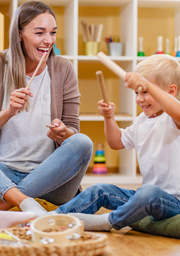Is It Safe for Children to Chew Gum?
By Bill Wirtz – As children get older they become increasingly interested in the candy aisle, and often reach for things they are not supposed to have. Chewing gum is one of those items for which many parents are unsure what exactly the rules should be.
The American Academy of Pediatrics (AAP) recommends that children be at least 5 years old before they start chewing gum. This is because children under 5 may not have the necessary fine motor skills to chew gum safely and could swallow it, which can lead to choking or other problems.
After the age of five is when kids embark on the journey of the school system, where they’re asked to behave and focus on their work. It is probably demanded by the individual teachers for students not to chew gum during their lessons, but if you thought that she should not chew gum while doing their homework, think again.
Numerous studies have shown that the act of chewing sugar-free gum improves focus and memory retention. It might seem counterintuitive that what is mostly considered a sweet treat would actually have positive impacts on your cognitive ability. Chewing sugar-free gum is not merely helpful for memory retention; it is also associated with higher focus and productivity overall.
Chewing sugar-free gum increases saliva flow which helps to wash away bacteria, viruses and toxins in the mouth, nasopharynx and upper gastrointestinal tract. Contrary to many uppers used in the workplace and by students, such as energy-drinks or coffee, sugar-free gum has mood boosting qualities without the downsides of sugar or caffeine dependence.
A study conducted in 2017 discovered that chewing gum had a positive impact on productivity and cognitive performance at work. It was also found to increase alertness, improve productivity, and reduce cognitive issues. In 2002, researchers conducted experiments using control groups to examine the effects of chewing gum on memory retention. The results showed that it enhanced the ability of participants to recall words immediately and after a delay.
Furthermore, a study in 2009 revealed that chewing gum not only improved alertness and reduced anxiety and stress levels but also had a positive effect on mood during stressful situations. Moreover, chewing gum can act as a distraction-free alternative to fidgeting, aiding individuals in maintaining focus on their tasks.
The question is not just whether it is safe for youth to chew gum, but also why it isn’t more incentivised. With news stories increasingly covering the technological distractions that keep youth distracted in class, shouldn’t we take a closer look at those things that might help them focus more?
Bill Wirtz is the Senior Policy Analyst at the Consumer Choice Center.
Related Reading
Is there a link between oral health and school performance?










